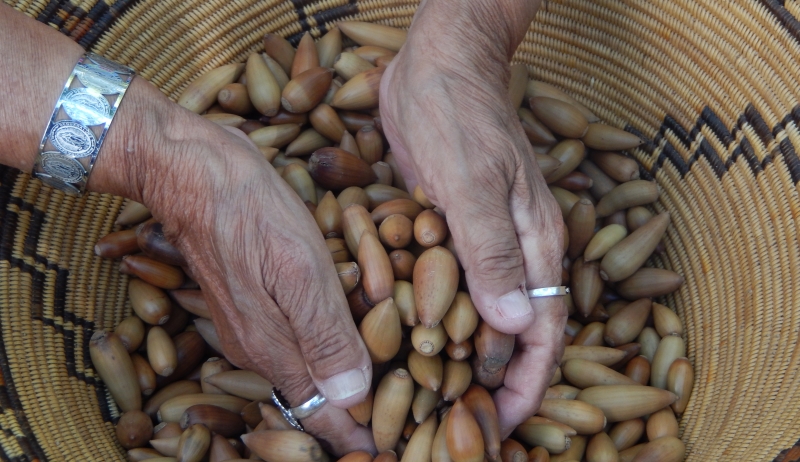Collections
The Anthropology Department holds collections and conducts research pertaining to the four main sub-fields of anthropology: archaeology, cultural anthropology, linguistics, and physical anthropology.
Archaeology
Archaeology is the study of past human cultures through objects created or changed by humans.
The archaeological collections held at the Museum come to us through a variety of sources. The majority of our collections were obtained through excavations by Anthropology Department curators, though we also curate many privately collected objects and serve as a repository for Channel Islands National Park and Los Padres National Forest.
The archaeological collections consist of over 80,000 artifacts from more than 400 sites, primarily from the Chumash and surrounding regions.
For more information on field notes from our early curators, the journals of early California Indian artifact collectors, and rock art records please visit our Research Archives page.
If you would like to access the archaeological collections, please contact us.
Cultural Anthropology

Cultural anthropology, or ethnology, is the study of the customs, behavior, and beliefs of living peoples and cultures. This study combines information collected through interviews and oral histories with material culture produced by individuals to form an understanding of the culture.
While the primary focus of the ethnographic collection centers on Chumash material culture, in particular the spectacular basketry produced in this region, the complete collection extends far beyond the Santa Barbara region. Materials from indigenous cultures of California, the Great Basin, Southwest, Northwest Coast, Plateau, Great Plains, and Arctic are all housed in the Anthropology Department.
To view a selection of nearly 200 American Indian baskets from the Anthropology Collection, go here.
For more information on ethnographic field notes, photographs, and records please visit our Research Archives page.
Linguistics

Linguistics is the study of the ways humans communicate.
The native language diversity of the West Coast is unparalleled by any other region of the United States leading ethnographers to document these languages alongside other information about the cultural heritage of the tribes in this region. These early efforts to document California languages are leading to language revitalization efforts within many native communities, including the Chumash in the Santa Barbara region. The Museum participates in this effort by making these resources available to native groups and offering meeting spaces for language revitalization classes.
The linguistic holdings at the Museum include sound recordings, field notes, and manuscripts highlighting Native American groups in California, particularly the Chumash. For more information on these resources please visit our Research Archives page.
Physical Anthropology

Physical anthropology is the biological and behavioral study of humans, exploring human health, ancestry, evolution, and adaptation.
This has long been a research focus of the Anthropology Department beginning with the appointment of our first curator, David Banks Rogers, in 1929. The discovery of Arlington Springs Man, representing the oldest human remains in all of North America, in 1959 was made by our second Curator of Anthropology Phil C. Orr on Santa Rosa Island. Today our staff continues to study how this individual fits in to the greater picture of human migration to the Americas.
The Anthropology Department’s current research in this field focuses on the genetic ancestry of people of this region, as well as California generally, to aid in the understanding of the peopling of the Americas. If you can trace your family’s lineage back to a native California group and are interested in participating in this research please contact Dr. John Johnson.

 Apache jar
Apache jar 
